Is 30 lbs an above average curl weight? Or does curling 30 pounds mean that you have below-average biceps strength?
The biceps musculature is stronger than most people think. But even with that fact granted, your biceps still don’t have the same strength potential as the likes of your lats and chest.
That’s why this 30 pound curl guide makes use of real-life case studies. With these real-world examples, you’ll be able to see what level of muscularity and what quality of form it took for different people to dumbbell curl 30 lbs.
See How You Stack Up:
- 10 pound bicep curls
- 15 pound bicep curls
- 20 pound bicep curls
- 25 pound dumbbell curls
- 40 pound dumbbell curls
Is curling 30 pounds good?
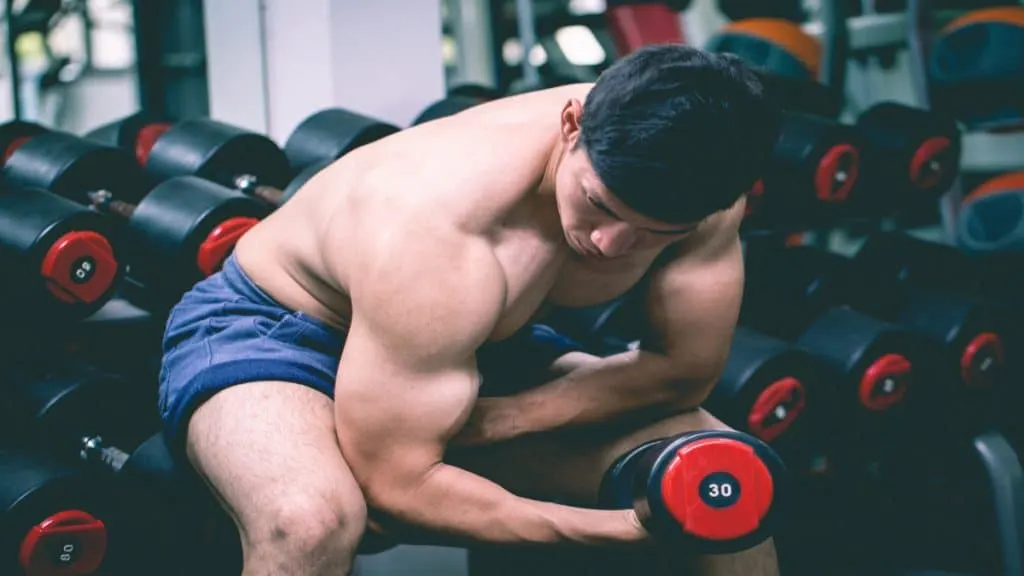
Is curling 30 pounds good for someone who lifts weights regularly?
Yes, curling 30 lb dumbbells for reps is good, providing that your lifting technique is also good. The more reps that you can perform with good form, the more impressive curling 30 lbs is.
Although 30 lbs might not seem like a lot of resistance, you can actually build really impressive biceps by doing nothing other than 30 lb dumbbell curls.
This is because your biceps respond to tension. [1] In other words, they can’t read the number on the side of the dumbbells or work out how much weight you’re lifting.
So, is curling 30 lbs good enough to build your biceps?
Yes, absolutely. If you control the negative and really squeeze your biceps at the top of every rep (and if you train close to failure), you can achieve excellent bicep gains by doing 30 pound curls.
Is curling 35 pound dumbbells good?
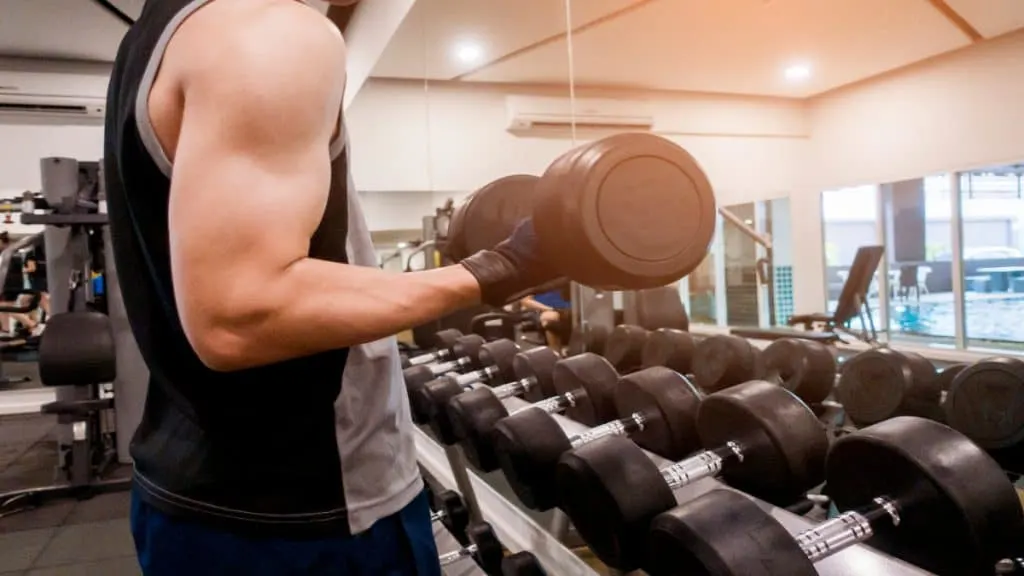
Is curling 35 lbs good or not?
Yes, in general, curling 35 pound dumbbells is very good as long as you use the proper form. If you can keep your shoulders and elbows still while curling 35 lb dumbbells, then you should be very satisfied with your achievement.
While you might see a lot of people in the gym lifting 35 lb dumbbells, not that many gym-goers can actually curl that amount of weight with the optimal bicep-building technique.
So if you can curl 35 lb dumbbells with perfect form, then you’ll likely have some very well-developed biceps as a reward for your commitment to strict and safe bicep training.
Of course, 35 lb hammer curls are easier than 35 lb bicep curls because when you use a neutral grip, your biceps muscles have more assistance from your brachialis and brachioradialis, which are two very powerful elbow flexors.
Are 30 lb bicep curls good if you use a barbell?
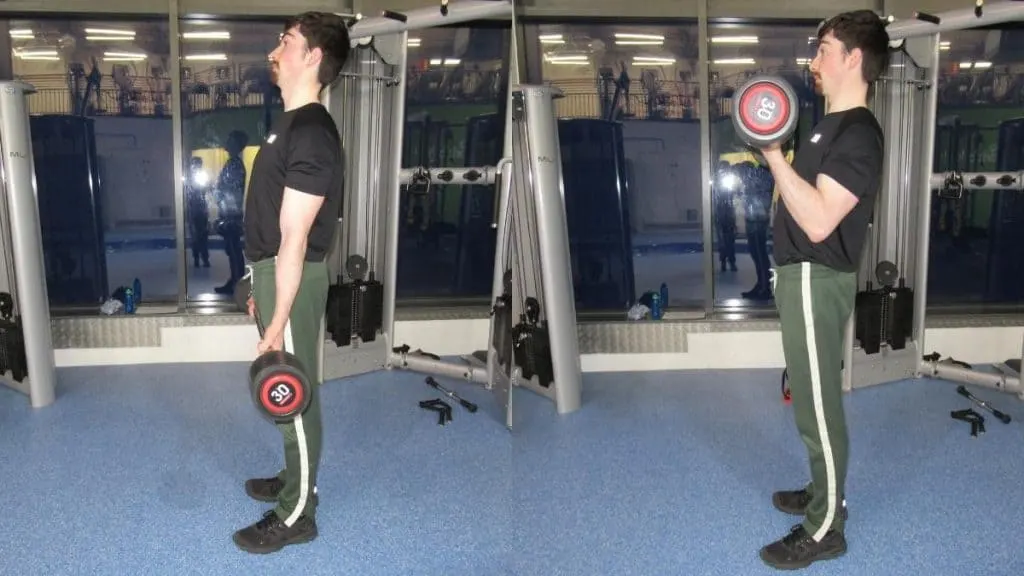
If you can only curl 30 pounds with a barbell, then your bicep strength is definitely below average (especially if you’re a male lifter).
30 lbs is only two-thirds of the weight of an empty Olympic barbell.
And while it might be sufficient for warming up and for intensity techniques like drop sets, merely curling 30 lbs for straight sets isn’t challenging enough for most people to experience biceps hypertrophy.
The main exception to this, of course, is if you’re a beginner. There’s nothing wrong with curling 30 pounds if you’re new to the gym and if you’re lifting technique is good. We all have to start somewhere.
30 lb curls can actually produce results if your starting point is really skinny or if you do some kind of intensity technique to make the weight feel heavier than it is (occlusion training is a good example).
30 lb bicep curl case studies
Watch other people do 30 pound bicep curls to see how your strength and technique stack up against that of real-world weight lifting enthusiasts.
Case study 1: FearAverage
The guy behind the YouTube channel FearAverage posted a video back in 2014 of him repping out some 30 lb dumbbell curls.
The weights looked really light for him, and I’m not surprised considering that his physique was very muscular indeed. After presumably getting board of curls, he started smashing out some shoulder presses to get an upper-body pump going.
His initial reps appeared to be a cross between bicep curls and hammer curls, which definitely made the weight more manageable for him because his brachioradialis and brachialis were in stronger force-producing positions.
The take-home message is that 30 lbs is a pump weight for people who already have good biceps. In other words, it’s a weight that you can probably lift between 15-25 times (per arm) if you push yourself.
Case study 2: Keith Bucholtz
Keith Bucholtz posted a challenge in 2014 where he appeared to do 30 lb bicep curls for as many reps as possible. I say “appeared” because it looked like he could have done even more reps (he did 24 reps per arm).
This reaffirms what I said before: 30 lbs is a typical pump weight for someone with a good amount of muscle mass but who’s not a bodybuilder.
In other words, you can build great-looking biceps with nothing more than a pair of 30 lb dumbbells and the willingness to train close to failure.
Keith’s video also shows that high reps are great for building the biceps. So don’t feel that you need to curl more than 30 lbs or 35 lbs if you want to get in shape (if you want to be a bodybuilder, that’s a different story).
Case study 3: Justin Lee
Even though Justin Lee can curl much more than 30 lbs, he often does 30 lb curls with a bar so that he can focus on the mind-muscle connection.
That granted, 30 lbs still seems really light for someone with biceps the size of his. Perhaps he just curls 30 lbs to specifically improve his mind-muscle connection rather than for any kind of direct hypertrophic benefit?
After all, if you can develop a solid biceps mind-muscle connection, then that enhanced ability to contract your biceps and feel them working will carry over to your other curls as well.
Either way, Justin’s case study just goes to show that time under tension is the primary driver of hypertrophy. [2] Reps and weight are really just convenient measuring units to track your progress.
Why am I stuck at 30 pound dumbbell curls?
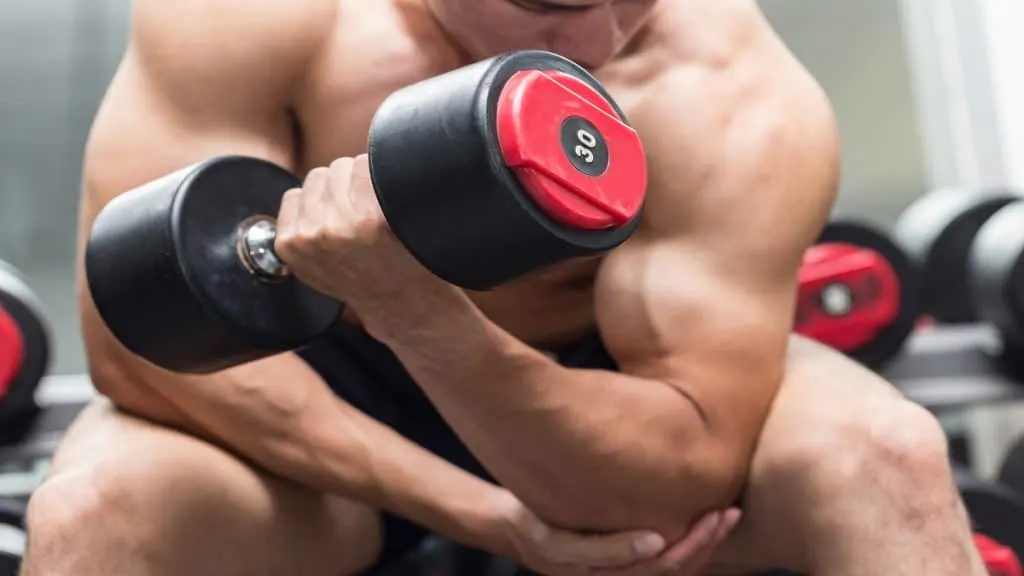
If you’re stuck curling 30 lb dumbbells, then it could be for one or more of the following reasons.
First off, you might be training too much. If you don’t give your biceps enough chance to recover, then they’ll struggle to gain strength. So consider dialing back your training frequency, training volume, or both and see if that improves your strength.
Perhaps you’re not eating enough? Most lifters report that they feel stronger in the gym and can recover faster when they eat in a calorie surplus and consume sufficient protein.
If you’re not sure whether your protein and calories are high enough, consider tracking your macros for a while to ensure that your food intake is sufficient to support your training. [3]
In direct opposition to the first point, maybe you’re not training your biceps enough? If you’ve already maxed out the muscle growth and strength development that you can attain from your current level of training volume, you might need to increase your training volume by doing more sets and/or more weekly sessions.
Also, there could be a chance that you’re improving your form (with is a type of progressive overload) without actually increasing the weight.
In other words, you might be placing more tension on your biceps by using better technique while lifting the same physical 30 lb weights.
Conclusion: Who should be curling 30 lb dumbbells?
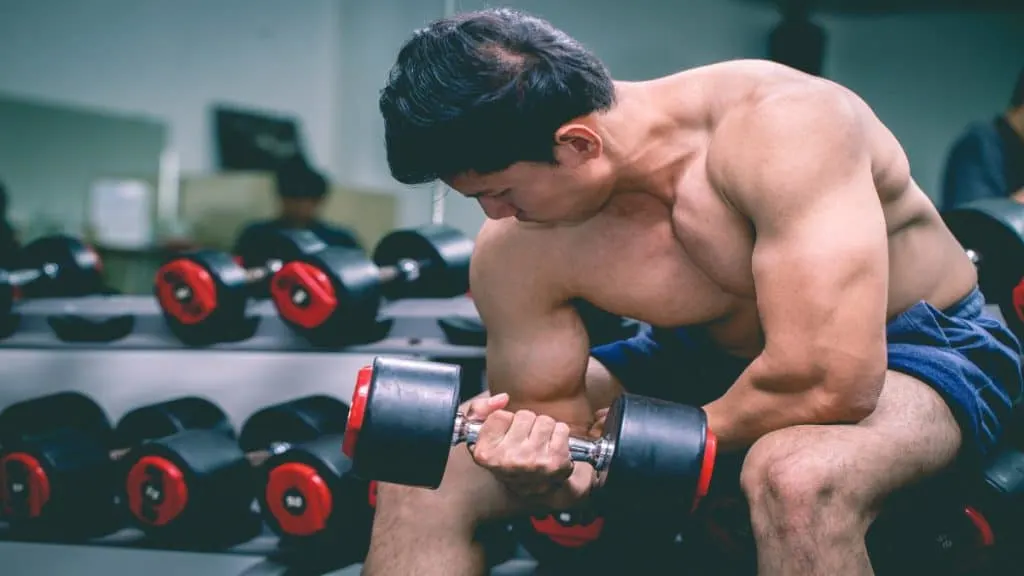
If you’ve got 6 months or more of training experience under your belt, then performing 30 lb dumbbell curls for multiple sets of 10 reps is a good benchmark.
Similarly, doing 35 lb dumbbell curls for multiple sets of 6-8 reps is good for someone with less than a year of serious weight lifting experience.
Just remember that there’s also no need to exceed your 30 lb curls. Far too many overeager lifters rush to increase the resistance and let their form disintegrate as a result.
So even though they might be curling heavier dumbbells, they’re actually putting less tension on their biceps (the primary driver of hypertrophy) because they’ve had to sacrifice their form in order to lift heavier weights.
References
- Burd, N. A., Andrews, R. J., West, D. W., Little, J. P., Cochran, A. J., Hector, A. J., Cashaback, J. G., Gibala, M. J., Potvin, J. R., Baker, S. K., & Phillips, S. M. (2012). Muscle time under tension during resistance exercise stimulates differential muscle protein sub-fractional synthetic responses in men. The Journal of Physiology, 590(2), 351–362. https://doi.org/10.1113/jphysiol.2011.221200
- Wilk, M., Golas, A., Stastny, P., Nawrocka, M., Krzysztofik, M., & Zajac, A. (2018). Does Tempo of Resistance Exercise Impact Training Volume? Journal of Human Kinetics, 62(1), 241–250. https://doi.org/10.2478/hukin-2018-0034
- Kubala, M. J. S. (2018, October 14). How to Count Macros: A Step-By-Step Guide. Healthline. https://www.healthline.com/nutrition/how-to-count-macros#step-by-step

